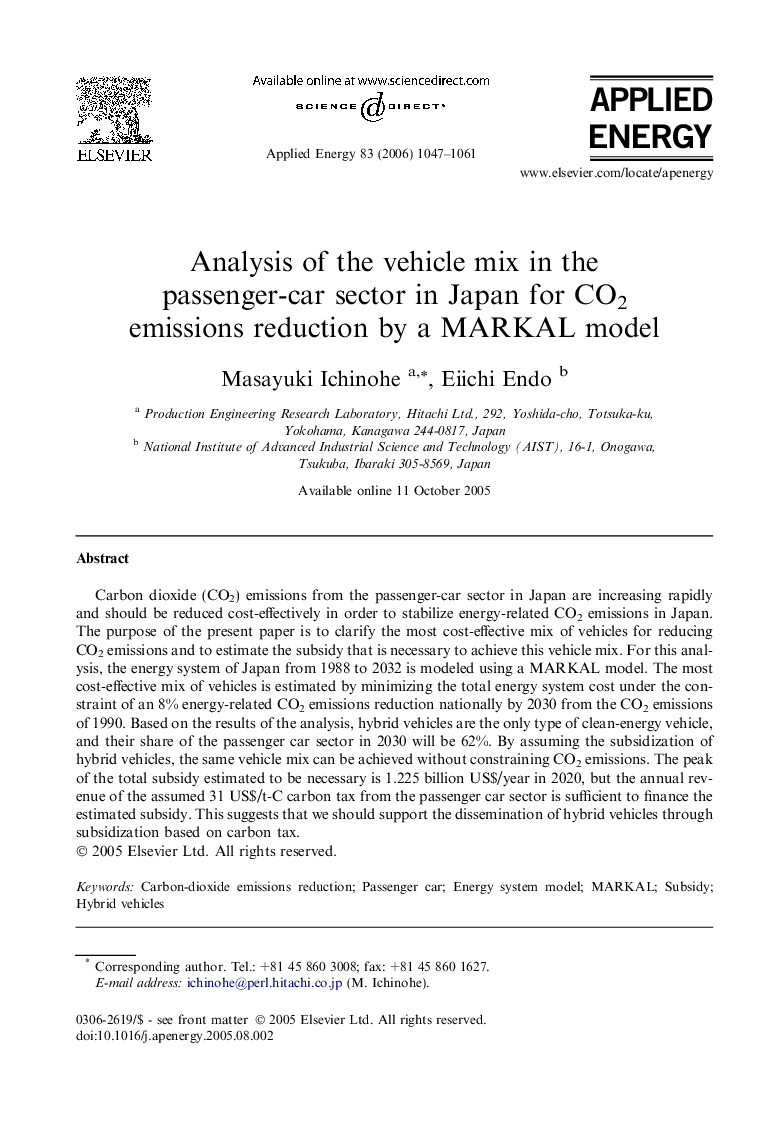| Article ID | Journal | Published Year | Pages | File Type |
|---|---|---|---|---|
| 245381 | Applied Energy | 2006 | 15 Pages |
Carbon dioxide (CO2) emissions from the passenger-car sector in Japan are increasing rapidly and should be reduced cost-effectively in order to stabilize energy-related CO2 emissions in Japan. The purpose of the present paper is to clarify the most cost-effective mix of vehicles for reducing CO2 emissions and to estimate the subsidy that is necessary to achieve this vehicle mix. For this analysis, the energy system of Japan from 1988 to 2032 is modeled using a MARKAL model. The most cost-effective mix of vehicles is estimated by minimizing the total energy system cost under the constraint of an 8% energy-related CO2 emissions reduction nationally by 2030 from the CO2 emissions of 1990. Based on the results of the analysis, hybrid vehicles are the only type of clean-energy vehicle, and their share of the passenger car sector in 2030 will be 62%. By assuming the subsidization of hybrid vehicles, the same vehicle mix can be achieved without constraining CO2 emissions. The peak of the total subsidy estimated to be necessary is 1.225 billion US$/year in 2020, but the annual revenue of the assumed 31 US$/t-C carbon tax from the passenger car sector is sufficient to finance the estimated subsidy. This suggests that we should support the dissemination of hybrid vehicles through subsidization based on carbon tax.
